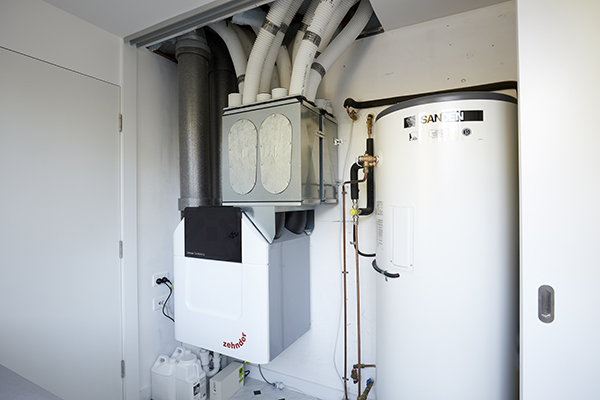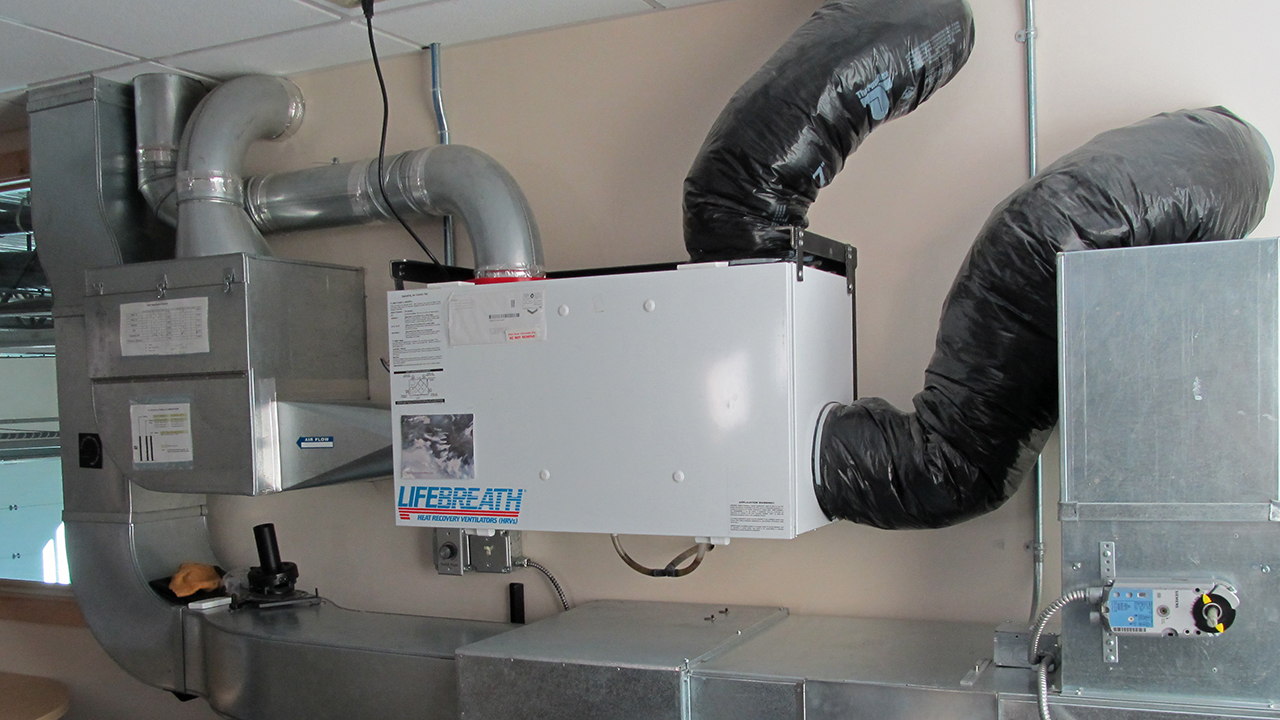The All-Inclusive Guide to the Uses of Heat Recovery Ventilation in Modern Structures
Heat Recovery Ventilation (HRV) systems stand for a significant development in constructing modern technology (HRV Heat Recovery Ventilation). They provide a technique for trading stagnant indoor air with fresh outside air while lessening energy loss. This approach not just improves interior air quality yet likewise contributes to power efficiency in both property and industrial structures. Comprehending the numerous applications and advantages of HRV can disclose its essential function in contemporary style and sustainability initiatives. The effects of this modern technology are worth discovering even more
Understanding Heat Recovery Ventilation Equipments

Although several contemporary structures focus on power efficiency, recognizing warm recuperation air flow (HRV) systems is important for optimizing indoor air high quality and reducing power consumption. HRV systems work by moving warm from stale indoor air to incoming fresh air, properly maintaining comfy interior temperature levels while reducing energy loss. These systems are composed of a heat exchanger, followers, and ductwork that help with the circulation of air. Throughout winter season, HRV units capture and recycle warmth from the outward bound air, while in summertime, they can aid cool incoming air. By constantly trading air, HRV systems likewise lower moisture and the concentration of indoor contaminants. Proper installment and maintenance of HRV systems are important for their performance and effectiveness in improving overall structure performance and convenience.
Advantages of Heat Recovery Ventilation
Heat recovery ventilation systems provide various benefits that boost both energy performance and indoor air high quality in modern-day structures. By catching and reusing power from exhaust air, these systems considerably decrease cooling and heating expenses, leading to lower power usage. They preserve a consistent circulation of fresh outside air, decreasing the threat of indoor air toxins and irritants. This constant exchange assists manage humidity levels, stopping mold and mildew development and making sure a much healthier living setting. Furthermore, HRV systems add to sustainability goals by lowering general carbon impacts. Their capacity to optimize air flow without sacrificing thermal convenience makes them a beneficial enhancement to modern structure layout, advertising both economic and eco-friendly advantages.
Applications of HRV in Residential Structures
As house owners significantly focus on energy effectiveness and interior air quality, the applications of warm healing air flow (HRV) systems in property buildings have come to be much more widespread. HRV systems are particularly valuable in firmly secured homes, where keeping fresh air flow is crucial for avoiding dampness build-up and indoor contaminants. They effectively transfer warmth from outward bound stagnant air to incoming fresh air, lowering power costs related to cooling and heating. Additionally, HRVs can boost comfort levels by controling humidity and temperature level. They are likewise versatile for different household layouts, including single-family homes and multi-unit buildings. Generally, incorporating HRV systems supports sustainable living methods while making sure a much healthier interior setting for occupants.
HRV in Commercial and Industrial Setups
In business and commercial settings, the implementation of heat recovery air flow (HRV) systems has ended up being increasingly vital for enhancing power effectiveness and preserving air high quality. These systems successfully transfer heat from exhaust air to incoming fresh air, minimizing the demand for extra heating or cooling. This not only lowers power prices however likewise adds to sustainability initiatives. Industries such as production, warehousing, and office complex profit considerably from HRV systems, as they help regulate temperature level and humidity degrees, guaranteeing a comfortable and efficient environment. Furthermore, HRV systems help in getting rid of impurities and excess wetness, enhancing interior air quality. As regulations around air high quality become stricter, the fostering of HRV technology is most likely to expand, making it an important component of contemporary commercial and industrial framework.
Future Trends in Heat Recovery Ventilation Innovation

Frequently Asked Inquiries
Exactly How Does Heat Recovery Ventilation Influence Indoor Air High Quality?
Heat recovery ventilation substantially improves interior air top quality by continuously trading stagnant interior air with fresh outside air while recovering energy. This process decreases pollutants, maintains optimal humidity levels, and ensures a healthier environment for residents.
Can HRV Systems Be Installed in Existing Buildings?
HRV systems can undoubtedly be mounted in existing buildings. Retrofitting may require modifications address to ductwork and ventilation layouts, but it substantially improves energy performance and indoor air quality, making it a viable choice for older frameworks.
What Maintenance Is Needed for HRV Equipments?

Exist Certain Climates Where HRV Is Much More Effective?
Heat recovery ventilation systems are specifically efficient in environments with considerable temperature differences between periods. These systems optimize power efficiency by recouping warm from exhaust air, making them perfect for both cool and moderately cozy atmospheres.
How Do HRV Systems Affect Power Expenses?
